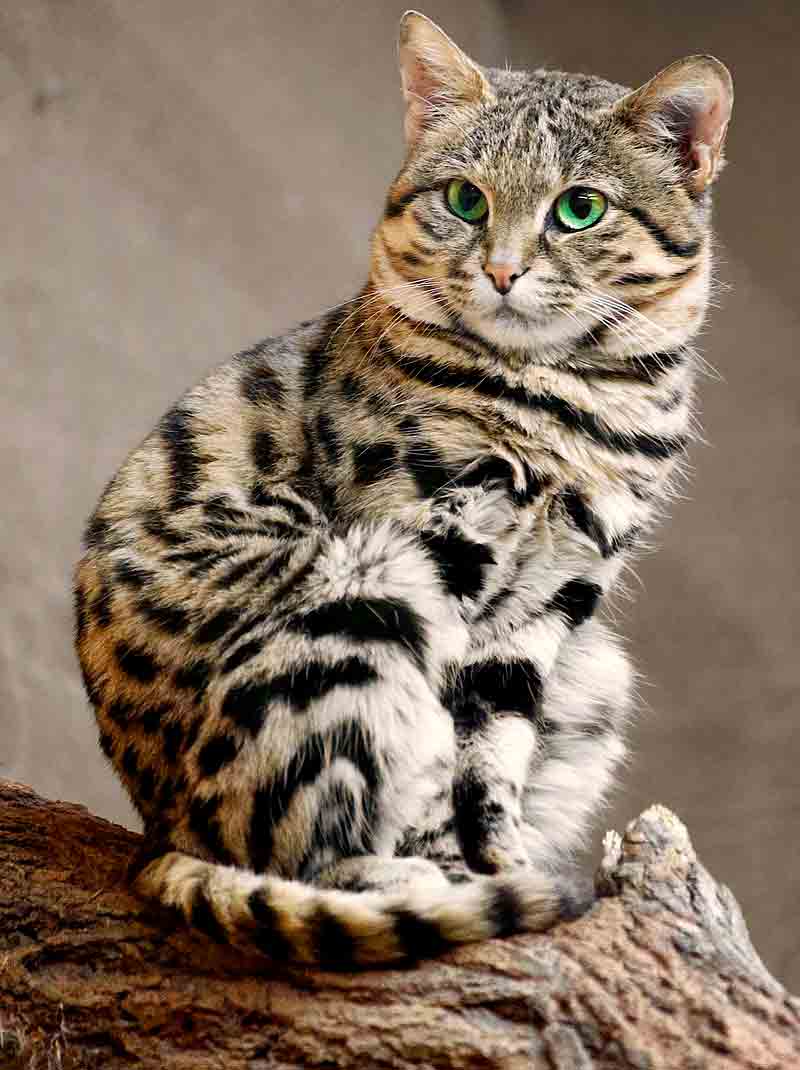
The black-footed wildcat (Felis nigripes), also known as the black-footed cat, is a small feline species native to Sub-Saharan Africa. This cat is one of the smallest species of wild cats and possesses some distinct and notable characteristics:
+ Zoo releases cute video featuring the ‘deadliest cats in the world’
+ https://petepop.com.br/record-with-the-worlds-loudest-purr-cat-enters-the-guinness-world-records/
Appearance: As the name suggests, this species has black soles on its feet. The body is covered in short fur with patterns of spots, ranging from small spots to large rosettes.
Size: It is small, with an average weight ranging between 1.5 to 3 kg for adults. Its body is slender, and its head is proportionally large in relation to the body.
Habits: The black-footed wildcat is primarily nocturnal, which means it is most active during the night. They are solitary and have a well-defined territory that they mark with urine and feces.
Diet: They are carnivores and skilled hunters. Their diet consists mainly of rodents, birds, and insects.
Reproduction: They typically give birth to one or two litters at a time. The gestation period lasts about two months.
Habitat: They prefer savannah-like habitats, semi-arid areas, and avoid dense forested areas. They are more often found in places with low vegetation.
Conservation: The black-footed wildcat is classified as “Vulnerable” by the International Union for Conservation of Nature (IUCN). The main threats to their survival include habitat loss due to land conversion for agriculture, hunting, and diseases transmitted by domestic cats.
Behavior: Despite their delicate appearance, they are known to be courageous and can even defend themselves against larger animals if they feel threatened.
The preservation of the black-footed wildcat is crucial for maintaining the biodiversity of African ecosystems. Awareness of this species and ongoing conservation efforts are vital to ensure their survival in the future.”
Note: The translation was performed from Portuguese to English.

